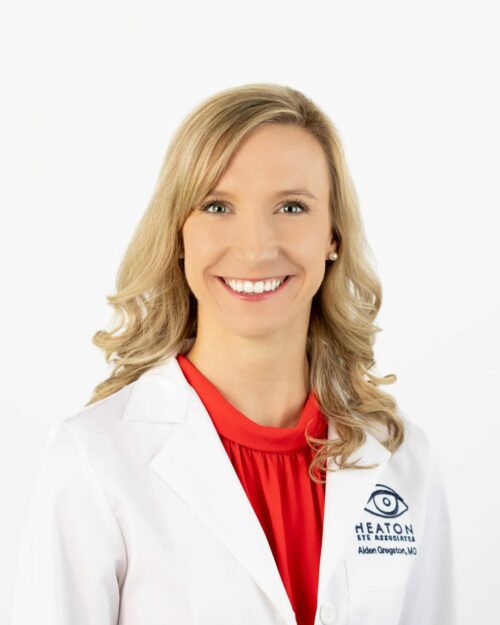Pediatric Ophthalmologist
Serving Children in Tyler, Athens, Longview, TX & All of East Texas
Joshua Jones, M.D. is a Tyler, TX native and is excited to be back in East Texas. He completed his undergraduate degree in biology at Baylor University, was chosen as a DeBakey Medical Humanities Scholar, and was inducted into Phi Beta Kappa. He went on to graduate from medical school and complete his internship year at the McGovern Medical School at UT Health in Houston, Texas. He completed his ophthalmology residency at Texas Tech University Health Sciences Center, serving as chief resident during his final year. He then finished his subspecialty training in Pediatric Ophthalmology and Adult Strabismus at the Duke Eye Center in Durham, North Carolina.
At Heaton Eye Associates, we understand the importance of early vision care for children’s development and well-being. Our pediatric vision care services are designed to detect and treat eye conditions in a child-friendly environment, ensuring your little ones receive the best possible care. From managing common issues like myopia and hyperopia to addressing more complex conditions such as strabismus and amblyopia, our team is equipped with the latest technology and expertise. We believe in a proactive approach to eye health, emphasizing prevention, early corrections, and developing astigmatism treatment plans for long-term visual success.
Trust us to be your partner in safeguarding your child’s vision, because every child deserves to see the world clearly. We have 4 convenient locations across Tyler, Athens, and Longview, TX to better serve the vision needs of children throughout Beaumont, Bryan, College Station, Conroe, Dallas, Houston, Jacksonville, TX, and all of East Texas. Contact our pediatric ophthalmologist today to learn more about our pediatric vision care services and schedule an appointment!
Strabismus
Strabismus is a condition that interferes with binocular (both eyes) vision when the eyes do not properly align with each other. Strabismus, also commonly known as cross-eyed, affects approximately 4% of children. Treatment should be started as early as possible to ensure the best possible vision for your child. Treatment may include glasses, contacts, vision therapy or eye muscle surgery.
Amblyopia
Amblyopia – is decreased vision in one or both eyes due to abnormal vision development in infancy or childhood. While problems are not obvious, vision loss occurs when stimulation of the nerve pathway between the brain and eye is not functioning correctly. As a result, the brain favors one eye, usually due to poor vision in the other eye. This condition is commonly known as “lazy eye” and is the leading cause of vision loss among children. Treatments for amblyopia include glasses or contacts, eye patch or eye drop therapy.
Children’s Eye Injuries
Children who have good vision in only one eye should wear safety glasses for protection at all times, even if they do not need glasses otherwise.
Vision care for children generally addresses two categories, injuries or physical defects. Accidental injuries cause vision loss in far too many cases, and more than half of the victims of eye injuries are children. The answer is prevention. And when there are accidental injuries, the right kind of first aid or emergency care is an essential first step. Hospital emergency rooms or trauma centers are usually able to provide emergency medical care for eye injuries, but referral to an ophthalmologist should be made to rule out any other complications. Remember, serious eye injuries are not immediately obvious.
Children’s Eye Glasses

The most common vision problems treated with eyeglasses are:
Myopia, or nearsightedness, is inherited and often discovered in children when they are eight to twelve years old. A myopic eye is longer than a normal eye, where light rays focus in front of the retina causing close objects to look clear, but distant objects to appear blurred.
Hyperopia, or farsightedness, is caused by light entering the eye and focusing at the back of the retina. With hyperopia, the hyperopic eye is a shorter than a normal eye. Older people who are farsighted can see far away objects better than those close at hand. Even though children have no problems seeing objects up close or at a distance, most children are a little farsighted. Correction of Hyperopia is necessary if decreased vision or cross-eyes occurs in young people.
Astigmatism occurs when light rays enter the eyes and focus at different places on the retina. With a normal eye the cornea, which is the front surface of the eye, is round like a basketball. If you have astigmatism, the cornea is shaped more like a football.
Can babies wear eyeglasses?
Of course! There is a test for babies’ eyes even before they can give a verbal response. The ophthalmologist will dilate the baby’s eyes and look inside with special instruments that determine the proper eyeglass prescription.
Which glasses are best for children?
We recommend plastic lenses and plastic frames. Especially, frames designed with active children in mind. Children may also need additional pads or straps to keep the glasses properly positioned.
At Home Prevention
Many common household items can cause eye damage when they are used improperly. Therefore, you must take care to:
Sports Injury Prevention

Sports-related eye injuries are increasing each year. Remember to require that your children wear protective safety glasses and specially-designed safety helmets.
Wear a helmet with a polycarbonate eye shield for:
Wear sports goggles with polycarbonate lenses and side shields for:





